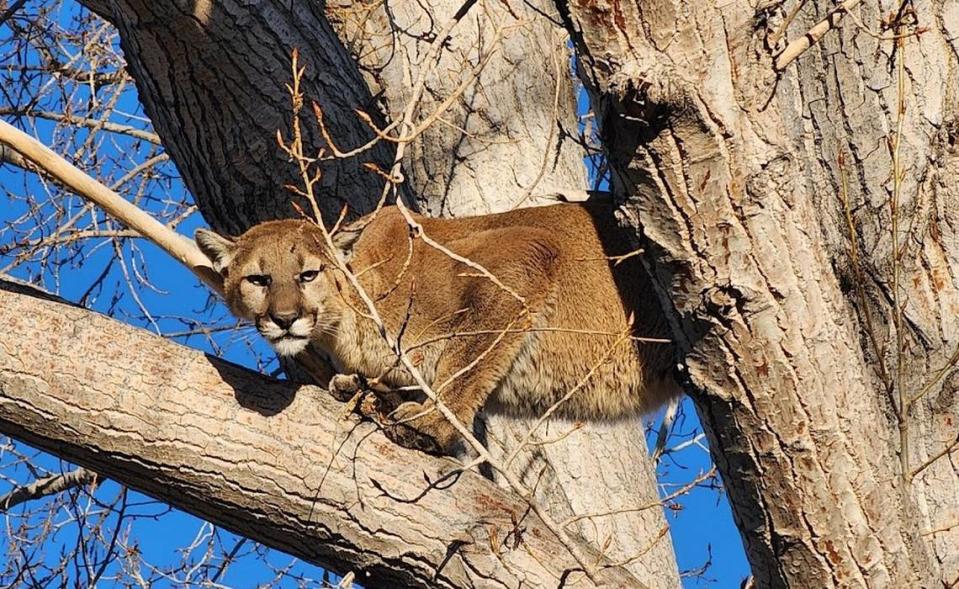Mountain lion or house cat? SLO County teen says he was attacked while riding dirtbike
An Arroyo Grande teen stood by his claim he was attacked by a mountain lion last week — despite officials’ assertion the attack was more likely a common cat.
The 19-year-old dirtbike rider reported he was attacked by what he thought was a mountain lion that leapt out of a tree as he rode by on James Way on July 3. In speaking with The Tribune, the teen’s father asked for his son’s identity to not be released.
Officers from California’s Department of Fish and Wildlife investigated the incident, sending DNA samples to the department’s Wildlife Forensic Laboratory in Sacramento for genetic testing.
When lab results came back, there was evidence of domestic cat DNA, officials told The Tribune — not a cougar.
When reached for comment Wednesday, the teenage dirtbike rider said he stood by his belief that he was attacked by something much larger than a house cat.
“Initially I did see something about the size of a dog — a large dog — drop from the tree and barely missed me,” he told The Tribune.
The dirtbiker said he wasn’t able to get a closer look at the animal since he was going around 20 mph and didn’t have time to process what had happened.
He said about a half second after seeing the animal drop down, as he grabbed the throttle to get “out of there,” something grabbed his helmet and ripped him back, almost knocking him out.
“I was almost knocked down,” he said, adding he was very scared while riding away.
He said he went back later to see if a tree had fallen over or if something else was on the path that could have fallen on him when he was riding.
“There was nothing I could have hit my head on, no tree had fallen,” he said.
He said he suffered from a minor concussion, neck pain and soreness after the incident.
Fish and Wildlife says DNA from scene was from cat, not mountain lion
Patrick Foy, a captain with Fish and Wildlife’s law enforcement division, said the department first received a report of a suspected mountain lion that launched itself from the tree and scratched a person’s leg.
Officers responded and collected samples from the teen’s clothing and bike helmet and analyzed the DNA on them.
“Mountain lion DNA was not detected on any of the samples,” Foy told The Tribune.
Meanwhile, the teen said he has cats at home and believed the cat DNA that Fish and Wildlife found on his helmet was likely from his pets, and not whatever fell on him.
He added that the animal didn’t “latch” on to him and that it didn’t fully touch him — perhaps contributing to why Fish and Wildlife did not get a DNA match for a mountain lion, he said.
“It just barely grabbed on to the back of my helmet and ripped me back,” he said.

Mountain lion attacks are rare in California
It’s important to note that mountain lion attacks in California are exceedingly rare — especially in San Luis Obispo County.
According to the Fish and Wildlife website, a person is 1,000 times more likely to be struck by lightning than attacked by a mountain lion.
The department said only 24 mountain lion attacks on humans have been reported in California since 1984. The majority of incidents were nonfatal, although in four cases in El Dorado, San Diego and Orange counties, victims died, Fish and Wildlife said.
No attacks have ever been confirmed in San Luis Obispo County, though an attack in Gaviota State Park in Santa Barbara was verified in 1992.
To avoid negative encounters with mountain lions, Fish and Wildlife recommended people stay aware of their surroundings and travel in the wilderness with a companion.
If you encounter a cougar, try to appear larger and more aggressive and never bend or crouch down.
To report encounters or attacks, call the Fish and Wildlife 24-hour dispatch center at 916-445-0045.


